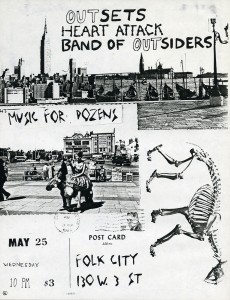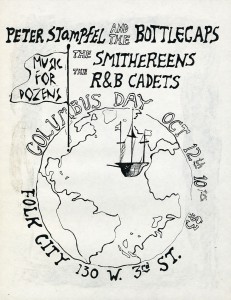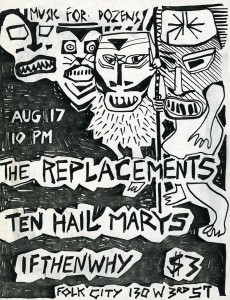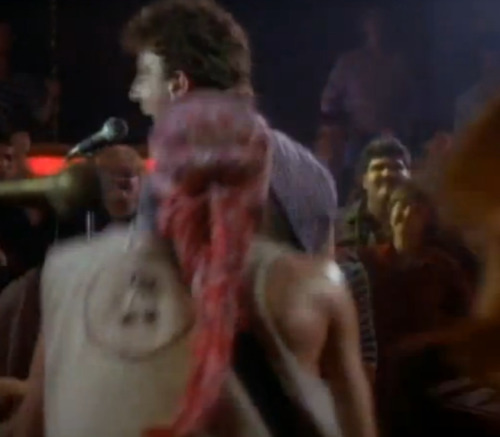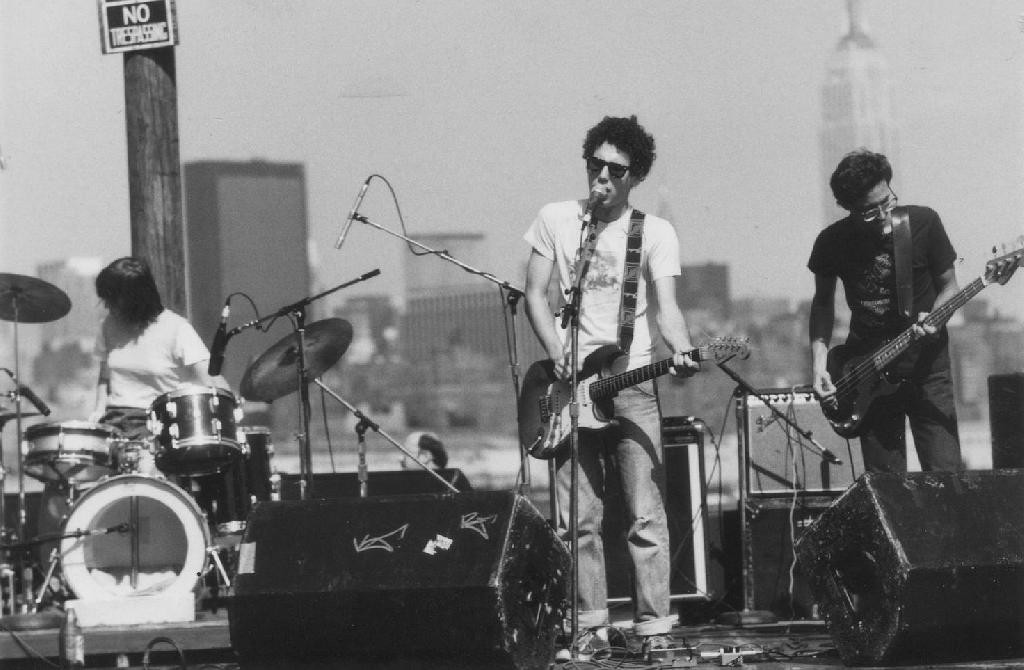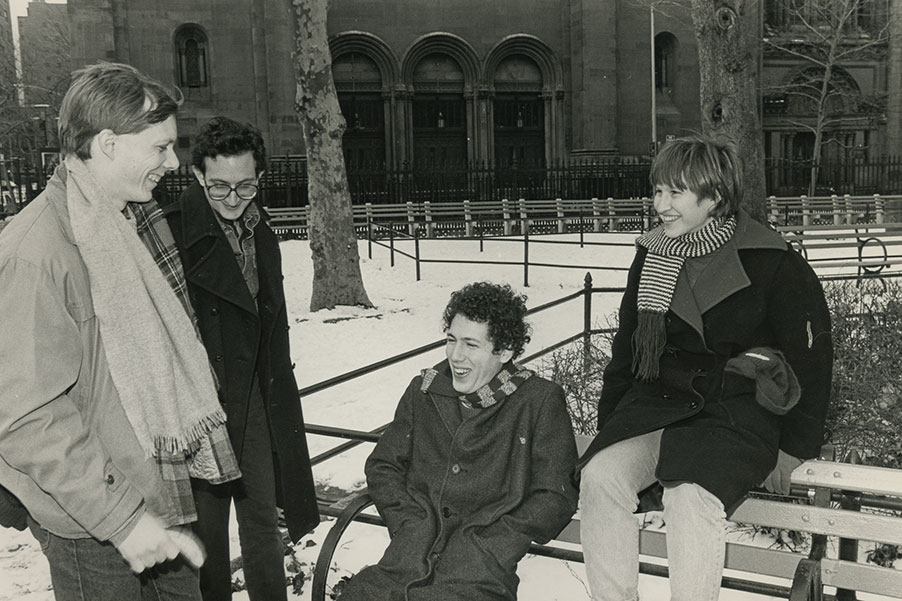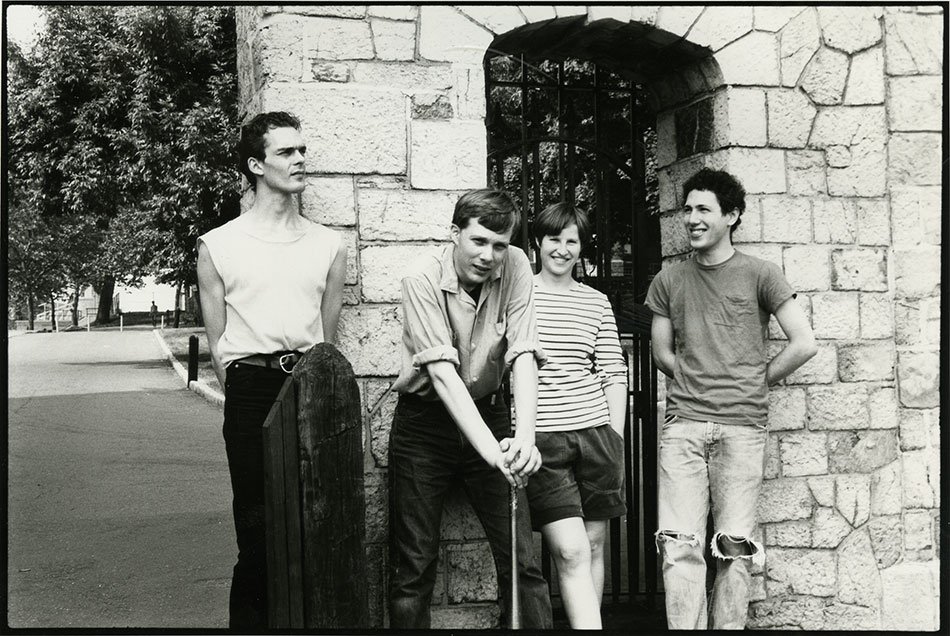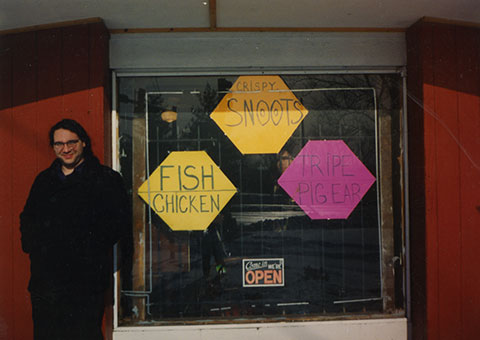big day coming: a reader’s guide
BIG DAY COMING
Yo La Tengo & the Rise of Indie Rock
reader’s guide plus
end notes, errata, & ephemera
see also: official Yo La Tengo Annotated Discography.
CHARACTER LIST
Yo La Tengo: Georgia Hubley, Ira Kaplan, James McNew
with
Todd Abramson, current Maxwell’s co-owner, former YLT roommate
John Beers, Happy Flowers
Bruce Bennett, The A-Bones, auxiliary YLT guitarist during WFMU marathons
Nils Bernstein, Matador Records
Alan Betrock, New York Rocker founder
Fred Brockman, The Kinetics, Snacktime Studios proprietor
Rick Brown, Information, Fish and Roses
Irwin Chusid, WFMU
Byron Coley, writer
Clint Conley, Mission of Burma, Ride the Tiger producer, bassist #3
Gerard Cosloy, Conflict, Homestead Records, Matador Records
Liz Cox, Christmas
Michael Cudahy, Christmas
Jim DeRogatis, Jersey Beat writer, Chicago Sun-Times columnist, radio host
Jad Fair, Half Japanese
Steve Fallon, Maxwell’s co-owner, Coyote Records founder, occasional YLT manager
Gaylord Fields, WFMU DJ, former YLT roommate
Ken Freedman, WFMU DJ and station director
Bobbie Gale, Atlantic Records
Sue Garner, Fish and Roses, Run On, The Last Round-Up
Karen Glauber, A&M Records
Danny Goldberg, Atlantic Records
Richard Grabel, New York Rocker, later music biz lawyer
Mark Greenberg, The Coctails
Tim Harris, Antietam, bassist #14
Michael Hill, New York Rocker, co-booker of Music For Dozens for series
Nicholas Hill, WFMU DJ
Gene Holder, the dB’s, YLT producer, bassist #11
Peter Holsapple, the dB’s
Lyle Hysen, Das Damen, Snacktime Studios proprietor
Emily Hubley, filmmaker, Georgia’s sister
Stephen Hunking, Hypnolovewheel
Adam Kaplan, Ira’s brother, occasional YLT manager
Neil Kaplan, Ira’s brother
Terry Karydes, A Worrying Thing
Tara Key, Antietam
David Kilgour, The Clean
Hamish Kilgour, The Clean
Wolf Knapp, Antietam, bassist #7
Jamie Kitman, YLT manager, 1990-1992
Bob Lawton, booking agent
Michael Lewis, Lyres, DMZ, bassist #2
Laura Levine, New York Rocker photo editor
Chris Lombardi, Matador Records co-founder
Craig Marks, Homestead Records, YLT roadie-pal
Mac McCaughan, Superchunk, Merge Records co-founder
Mike McGonnigal, Chemical Imbalance
Glenn Mercer, The Feelies
Bill Million, The Feelies
Phil Morrison, filmmaker, YLT roadie-pal
Glenn Morrow, New York Rocker, The Individuals, Bar/None Records owner
Chris Nelson, New York Rocker, Information
Peter Occhiogrosso, SoHo Weekly News
Dave Rick, bassist #1, occasional YLT fill-in guitarist, Phantom Tollbooth, Bongwater
Will Rigby, the dB’s
Rick Rizzo, Eleventh Dream Day
Kevin Salem, Yo La Tengo lead guitarist on Fakebook tours
Tom Scharpling, WFMU DJ
Dave Schramm, Yo La Tengo lead guitarist, 1985-1986
Andy Schwartz, New York Rocker editor
Robert Sietsema, Mofungo, photographer, food critic
Chris Stamey, the dB’s, occasional YLT fill-in guitarist, bassist #6
Maynard Sipe, The Maynards
Jim Testa, Jersey Beat founder
Roy Trakin, SoHo Weekly News
Brian Turner, WFMU DJ & music director
Michael Vickers, Go-Betweens, bassist #9
Janet Waegal, New York Rocker
Kurt Wagner, Lambchop
Ken Weinstein, Atlantic Records
Stephan Wichnewski, bassist #5
Janet Wygal, The Individuals, The Wygals, bassist #13
INTRODUCTION: THE STORY OF YO LA TANGO
p. 2: An Australian promoter achieves the Yo La Tengo typo trifecta, spelling all three words incorrectly.

(see also: Yo La Tengo’s own gallery, Top Billing.)
PROLOGUE: THE ELYSIAN FIELDS
p. 13: Maxwell Tavern in 1974, three years before its purchase by the Fallon family.

(via the Hoboken Historical Museum)
CHAPTER 1: THE HUDSON LINE
p. 21: Tommie Agee made the two legendary catches in Game 3 of the 1969 World Series, not Cleon Jones. I should know better.
CHAPTER 2: NEW YORK ROCKERS
p. 39: Andy Schwartz and New York Rocker back issues in the Rocker office. (photo by Laura Levine)

(see also: a gallery of New York Rocker covers.)
CHAPTER 3: AT HOME WITH THE MAYPOS
p. 53: The voices of Georgia and her older sister Emily star in Windy Day, a 1968 Oscar-nominated short by their parents, Faith and John Hubley.
Georgia and Emily’s voices star again Faith and John Hubley’s Cockaboody, animated circa 1973, but recorded prior to Windy Day.
p. 59: The 1956 Maypo ad by Faith and John Hubley starring Georgia’s brother Mark that became a national sensation, eventually spawning the phrase “I want my MTV.”
p. 61: Faith and John Hubley’s 1962 collaboration with Dizzy Gillespie, The Hole.
p. 67: Emily Hubley’s hand-drawn video for “Big Brown Eyes” by the dB’s, 1982.
CHAPTER 4: MUSIC FOR DOZENS
p. 69: “Gauge-loving” should read “garage-rock loving.”
p. 69: The 1982 video for “Anything Could Happen,” from the epochal Boodle, Boodle, Boodle EP by The Clean, leading lights of Dunedin, New Zealand’s punk scene and longtime Yo La Tengo favorites.
p. 73: An early version of “Crazy Rhythms” performed by The Feelies at CBGB in 1978.
p. 74: Following the 1979 release of Crazy Rhythms, The Feelies morphed into the abstract and Brian Eno-influenced Willies and played around their hometown of Haledon.
p. 80: Bad Brains are (duh!) from Washington, DC, not New York — though they were NYC residents at the time of their first album, for which Ira wrote liner notes.
p. 84: New York Rocker photo editor and birthday girl Laura Levine fronts the newly formed Georgia & Those Guys at the New York Rocker office. (An interview with Laura.)

CHAPTER 5: GEORGIA & THOSE GUYS
p. 93: Some of Georgia’s flyers for the Music For Dozens series at Gerde’s Folk City, booked by Ira and Michael Hill from November 1982 through January 1984.
p. 98: In spring 1983, Ira and Georgia traveled to Boston to see one of the final shows by Mission of Burma, one of their favorite bands.
p. 109: The flyer for the first proper Yo La Tengo show, Maxwell’s–December 2, 1984–a co-bill with close friends Antietam. (Mucho excellent Antietam history at their official site.)

p. 109: The Urinals perform “Surfin’ With the Shah” live in 1983, the first song Yo La Tengo played at their first gig in December 1984.
CHAPTER 6: YO LA TENGO
p. 117: Georgia, visible in barely a single frame in the video for Bruce Springsteen’s “Glory Days,” shot by filmmaker John Sayles at Maxwell’s, September 1985.
p. 118: “The Hoboken Sound” aired on WNEW, which didn’t become WNYW until a few months later, in January 1986.
p. 119: Yo La Tengo with Mike Lewis (bassist #2) at the River City Fair in Hoboken, August 1985. (Photo by Jim Testa of Jersey Beat.)
p. 127:Mose Allison, not Moses.
p. 128: William Berger, not William Burger, whose “My Castle of Quiet” can still be heard on WFMU.
p. 130: Outtakes from the Ride the Tiger photo shoot. (photos by Carol Addessi)
The Ride The Tiger band with Mike Lewis and Dave Schramm (far left).
The short-lived lineup featuring both Dave Schramm (with baseball bat) and Stephan Wichnewski (bassist #5, far left) at the Stevens Institute near the Elysian Fields in Hoboken.
CHAPTER 7: ROAD FOOD, GOOD FOOD
p. 136: Georgia, Ira, and Stephan Wichnewski (bassist #5) perform “House Fall Down” at Cicero’s in St. Louis, November 1987, the earliest circulating footage of Yo La Tengo, recorded for the local cable access show Psychotic Reaction. (The opening act was Uncle Tupelo, making their first trip the big city from nearby Belleville, IL.)
p. 152: Ira and Georgia perform “Teenager in Love” and Buddy Holly’s “Everyday” in their Hoboken living room, spring 1988.
CHAPTER 8: FAKEBOOK
p. 165: A compilation of live and radio performances from the Fakebook years.
p. 166: A firsthand account of Yo La Tengo and Daniel Johnson’s February 1990 collaboration live on WFMU by DJ Nicholas Hill and link to the complete special.
p. 171: Yo La Tengo’s first video, for “The Summer.” Directed by Phil Morrison, summer 1990.
p. 171: Yo La Tengo with Gene Holder (bassist #11) perform The Kinks’ “Big Sky” in Berlin, August 1990.
CHAPTER 9: AND SUDDENLY…
p. 182: Maynard Sipe was the drummer for the Maynards, not the singer.
p. 187: James, in his solo Dump guise, performs several tracks (including a cover of the Fugs’ “Morning, Morning”) in the Dutch countryside, circa 1995.
CHAPTER 10: BIG DAY COMING
p. 189: A mix containing 7 radically different live versions of “Big Day Coming,” including its March 1991 debut at Maxwell’s.
p. 190: Bassist #15, James McNew, on the road with Yo La Tengo in St. Louis early in his tenure, ready to undergo the rite of snoots.
p. 197: Headphones firmly affixed, Ira prepares for another take of “Mushroom Cloud of Hiss.” May I Sing With Me sessions, Boston, fall 1991.

p. 214: Hal Hartley’s rejected video for “From A Motel 6.”
The remade video for “From A Motel 6.”
Phil Morrison’s video for “Big Day Coming.”
CHAPTER 11: HOT CHICKEN
p. 223: Lambchop’s 2009 concert film, Live at Merge XX, directed by Phil Morrison.
p. 229: Phil Morrison’s video for “Tom Courtenay.”
CHAPTER 12: ELECTR-O-PURA
p. 242: see also Yo La Tengo Sell Out.

CHAPTER 13: ROCKET #9
p. 250: The “Sugarcube” video.
p. 256: In fact, Oar Folkjokeopus didn’t close, merely changed its name to Treehouse Records. Stop by on your next trip through Minneapolis.
CHAPTER 14: OUR WAY TO FALL
p. 266: Jon Spencer and Yo La Tengo perform Superchunk’s “Slack Motherfucker” at Matador’s 10th anniversary shows.
p. 268: A complete performance filmed at the Cat’s Cradle in North Carolina with Superchunk’s Mac McCaughan and The Clean’s David Kilgour rotating on auxiliary guitar/vibraphone/keyboards, March 2000.
Yo La Tengo + two drummers + strings perform “You Can Have It All” on Conan O’Brien, June 2000.
p. 272: “Harold” should be “Armando.”
CHAPTER 15: A PLASTIC MENORAH
p. 285: Portraits of Yo La Tengo taken just before the release of 2003’s Summer Sun by photographer Jack Chester.



CHAPTER 17: POPULAR SONGS
p. 309: “1999” from Dump’s redacted album of Prince covers, That Skinny Motherfucker With the High Voice?
p. 312: Yo La Tengo back Lambchop’s Kurt Wagner on “Theone” during an early Freewheelin’ Yo La Tengo tour, Nashville, January 2008.
p. 313: Alex Chilton joins Yo La Tengo at Maxwell’s, December 2007, for “Let Me Get Close To You.”
p. 316: Yo La Tengo and Roger Moutenot record Popular Songs at the band’s rehearsal space, 2009. Photo by Liz Clayton (and other photos from the sessions).

p. 321: There were two American installments of All Tomorrow’s Parties before the festival moved to New York, though none in the style of the festival’s British holiday camp roots.
p. 324: Yo La Tengo back Wilco’s Jeff Tweedy on “Jesus, etc.” at Maxwell’s, 3 December 2010
The Elysian Charter School of Hoboken sings “Sugarcube” at Maxwell’s, 3 December 2010
NOTES
p. 327: The list of former Yo La Tengo bassists was accidentally printed alphabetically instead of chronologically.
Terry Karydes (A Worrying Thing, 1982-1983)
Dave Schramm (A Worrying Thing, 1983)
Dave Rick (1984-1985)
Mike Lewis (1985-1986)
Clint Conley (1986)
Steve Michener (1986)
Stephan Wichnewski (1986-1989)
Chris Stamey (1986)
Wolf Knapp (1988)
Tony Maimone (1988)
Robert Vickers (1989)
Al Greller (1990-1991)
Gene Holder (1990)
Wilbo Wright (1990)
Janet Wygal (1990)
Tim Harris (1991)
James McNew (1991-present)

